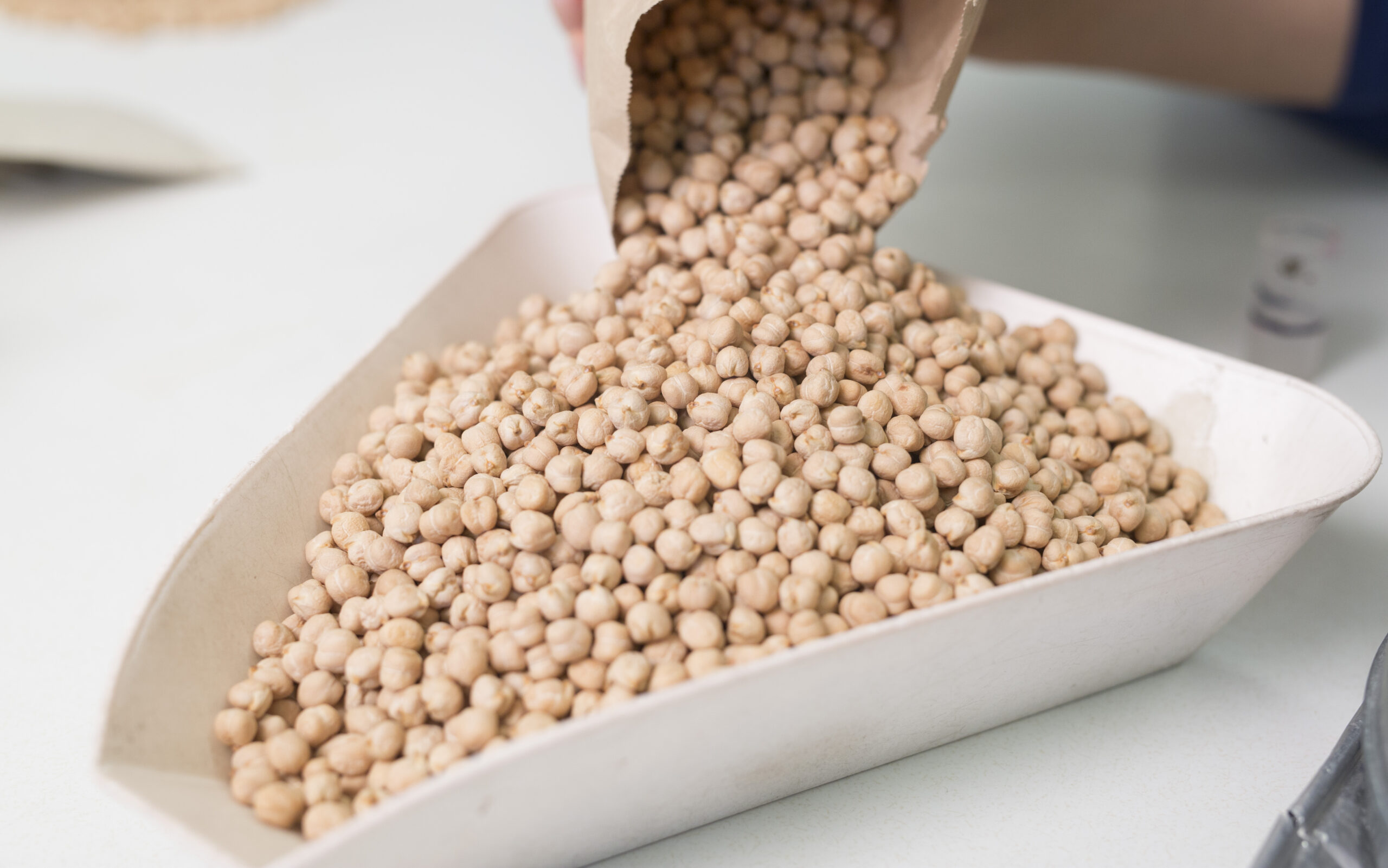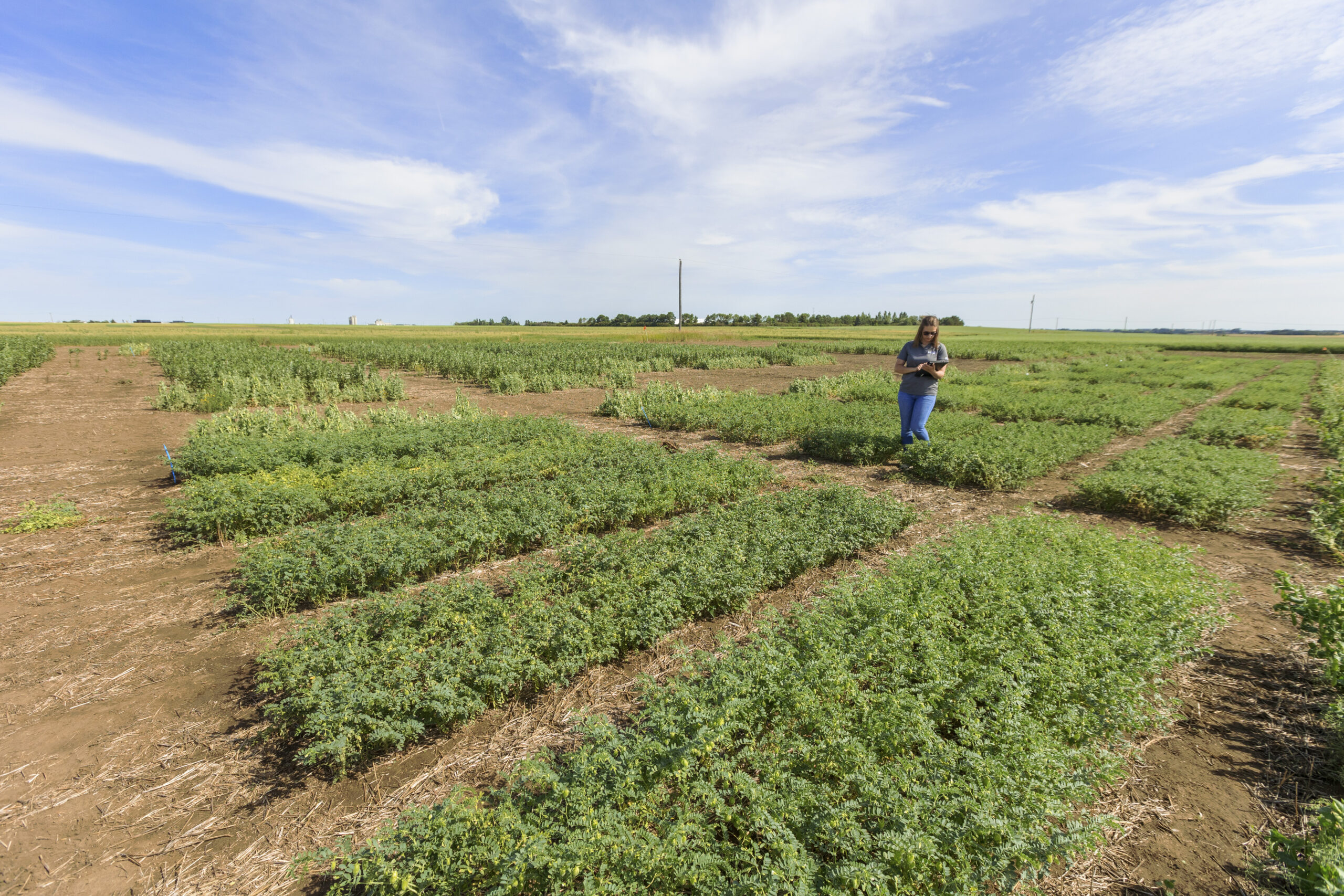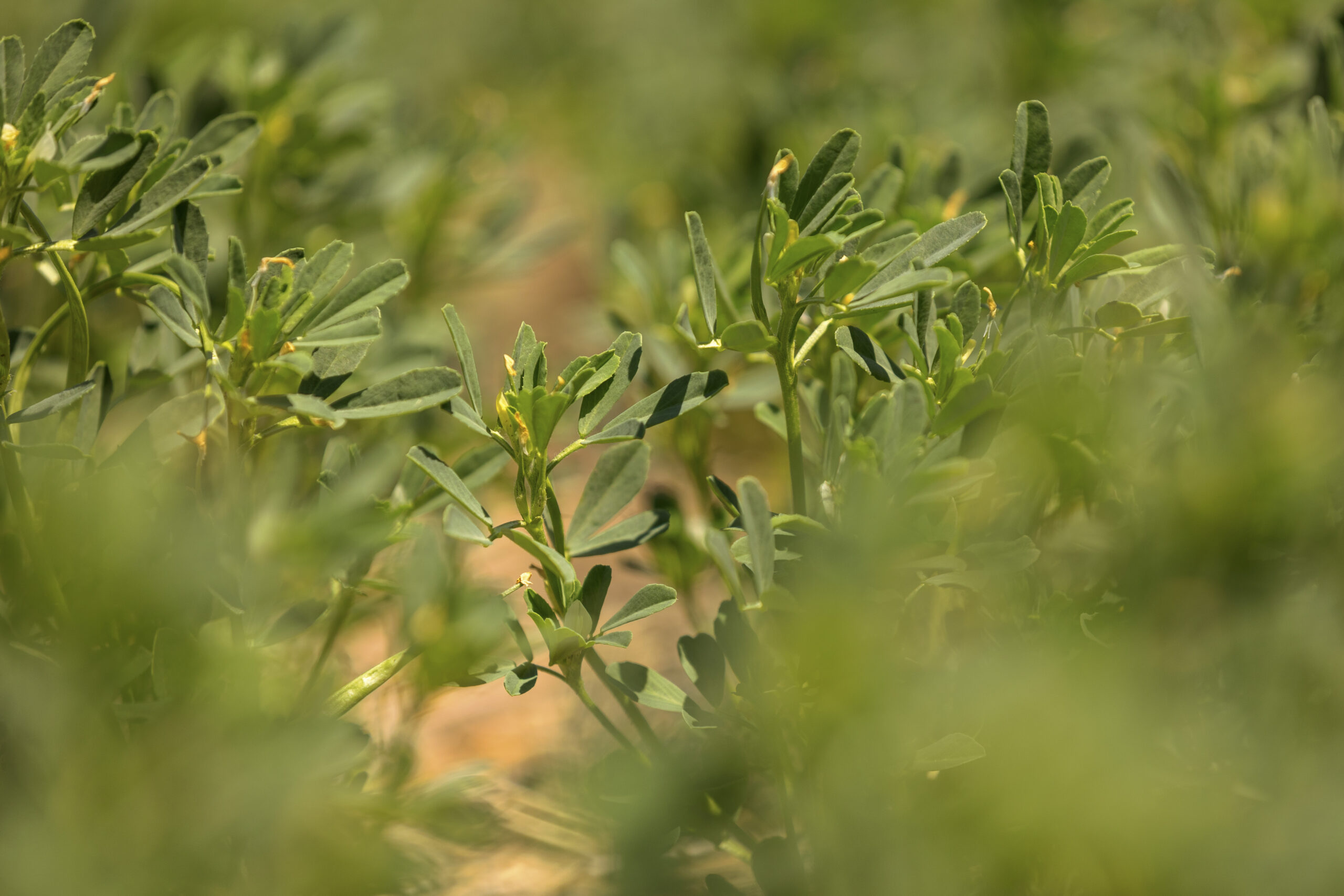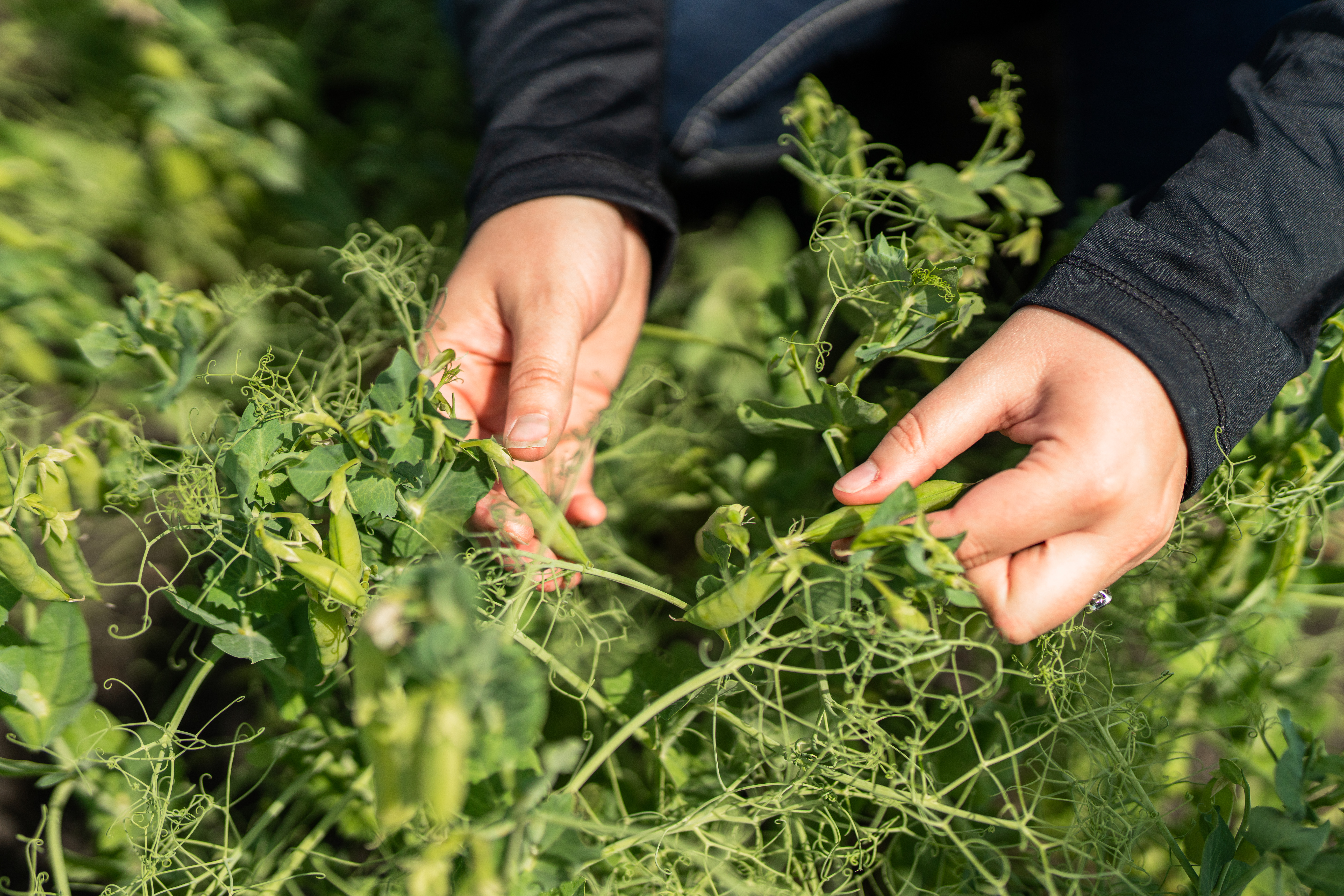While the long-term pulse breeding agreement between Saskatchewan Pulse Growers (SPG) and the University of Saskatchewan (USASK) ended in 2020, breeding research continues. Over the last four years, SPG, with co-funding support from the Saskatchewan Ministry of Agriculture’s Agriculture Development Fund (ADF) and other co-funding bodies, has supported breeding research for peas, chickpeas, and dry beans. The breeding program for peas and chickpeas has transitioned to funding within the Pulse Science Cluster until 2028.
Breeding research is a continuum, with new varieties made possible due to the breeding work and varieties that preceded them. While several varieties of pea, chickpea, and dry bean have been released in the last four years, breeding research also ensures future releases of new varieties and the resolution of more complex challenges like disease resistance.
Dry Beans: Keeping the seed pipeline full
The objective of the dry bean breeding program, funded by ADF and SPG, was to continue the breeding program and release bean varieties that were adapted to the Saskatchewan environment.
Dr. Kirstin Bett, a breeder in the dry bean program, says, “Beans originated in South and Central America and are not adapted to a short growing season or the long days we get in Saskatchewan. There are a lot of correlations between earlier maturing beans and lower yield. We want to increase yield and offer beans that can be grown across a wider range, both in irrigated and dryland areas. Our varieties tend to be broadly adapted and are grown across Western Canada.”
From 2020 to 2024, the breeding program released two new varieties: CDC Whitetrack navy bean and CDC Turtle Mountain black bean. CDC Sunburst yellow bean was released slightly before this phase of the program began; another yellow bean is currently in seed production and is on track for release in 2025.
The breeding program screens for molecular markers for disease resistance, both for common and halo blight, and that screening is showing results. Dr. Bett says, “The yellow bean we were hoping to release this year is interesting because it is the first one available with both common and halo blight tolerances, which will be a game changer for seed production.”
The program is transitioning to other funding sources and has funding from ADF and SPG to find markers for anthracnose tolerance.
Peas: Six commercialized varieties and root rot progress
In the four years that ADF, Western Grains Research Foundation (WGRF) and pulse industry organizations, including SPG, have funded pea breeding research, the Crop Development Centre (CDC) program has supported 20 varieties for registration, six of which have been commercialized. The varieties were developed using conventional breeding methods supplemented with molecular approaches.
| Varieties supported for registration | Commercial Name | Type | Licensee |
|---|---|---|---|
| CDC 5779-1 | CDC Boundless | Yellow | SeCan |
| CDC 5947-4 | CDC Engage | Yellow | Alliance Seed |
| CDC 1513-2 | Pending | Marrowfat | Rudy Agro |
| CDC 6471-2 | CDC Canuck | Yellow | SeCan |
| CDC 5791-9 | CDC 5791 | Green | Canterra Seeds |
| CDC 5845-2 | CDC 5845 | Green | Alliance Seed |
The pea breeding objectives were to develop high-yielding pea varieties for Western Canada with improved resistance to root rot. Dr. Tom Warkentin, the lead on pea breeding for the Western Canada project, says, “The varieties we released bring improvements in grain yields, plus one or more of increased protein, improved lodging, seed coat breakage, and competitiveness with weeds.”
Dr. Warkentin says that root rot is a complicated challenge that will take the combined efforts of many researchers and years to solve. “We have developed a lot of germplasm with improved root rot resistance. That germplasm will give rise to new varieties in the coming years. We’re working hard to ensure we don’t sacrifice other important traits, such as high yield when we breed for root rot resistance.” The research team tests the resistance of new varieties in the U of S root rot nursery and root rot nurseries at Agriculture and Agri-Food Canada (AAFC) stations in Lethbridge and Morden, where plants are grown in infected soil.
While the co-funded project wrapped up in 2023, another five-year cycle has begun through the Pulse Science Cluster with 50% funding from AAFC, 25% from SPG and 25% from other industry organizations. The focus will continue to be on releasing new high-yield varieties with improved root rot resistance and improved protein concentrations. They will also focus on building germplasm with improved heat and drought tolerance and improved nitrogen-fixing capability.
Chickpeas: New varieties for local and international markets
In the last four years, most of the funding for chickpea research came from the provincial government, with 25% provided by SPG. Under the Pulse Science Cluster, from 2023 to 2028, the funding is evenly split between the federal government and SPG.
The research objective of the co-funded chickpea breeding program was to develop high-yielding chickpea cultivars with improved agronomic and seed quality characteristics for Western Canada. Dr. Bunyamin Tar’an, the lead for the chickpea breeding program, says, “Globally, we are the northernmost latitude at which to grow chickpeas. We have challenges with the length of our growing season. We are developing early maturing and high-yielding varieties while addressing traits important to the end consumers, such as seed size, shape, colour and protein levels. We also need to meet farmers’ disease and herbicide resistance requirements.”
The chickpea breeding program includes breeding for Kabuli-type (white/creamy chickpeas), Desi-type (brown seed coat chickpeas), and specialty chickpeas. The two types have different trait requirements, with consumer demand for Kabuli-type chickpeas for their high protein and high oil levels, which provide a creamy texture in hummus. Desi-type chickpeas, in demand in India and the surrounding areas and local markets in North America, are more commonly milled into flour and require a lower oil content.
Since 2020, breeders have released Kabuli varieties CDC Pasqua and CDC Pearl, specialty/Desi chickpeas CDC Kala (black seed coat desi) and CDC Sunset, a regular Desi type. In 2024, two additional Kabuli varieties were released, CDC Hardy and CDC Climax, with high-yielding potential and moderate resistance to Ascochyta blight.
Breeders are working on an additional project to explore wild chickpea species to increase Ascochyta blight resistance in cultivated chickpeas. Dr. Tar’an says, “We had exhausted our options in the primary gene pool. We have found resistance in a more distant relative and are now using a species that is crossable with chickpeas to use as a bridge. We need to start somewhere, and even though progress is slow, we are making progress.”
Over the next four years, the program will push for larger seeds in Kabuli chickpeas and improve maturity and disease resistance. In collaboration with scientists at AAFC Saskatoon, they will also increase herbicide tolerance in new groups of herbicides. Another partnership with scientists from AAFC Swift Current will explore new sources for resistance to Ascochyta blight, the role of chickpeas in carbon sequestration, and nutrient use efficiency.
The researchers heading these three breeding programs appreciate the support from the provincial government and SPG for the bridge funding from 2020 to 2023 and the federal government for the Pulse Science Cluster. Dr. Tar’an says, “It will help us make more progress for farmers and increase the economic impact of these pulses in Canada.”



